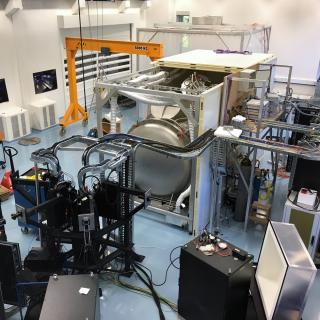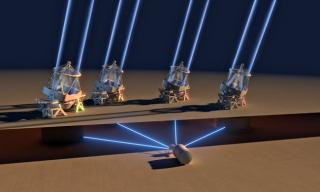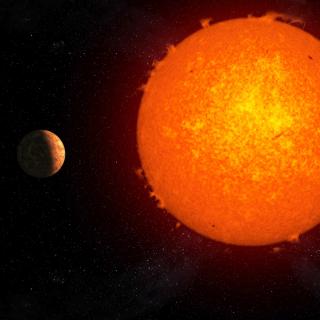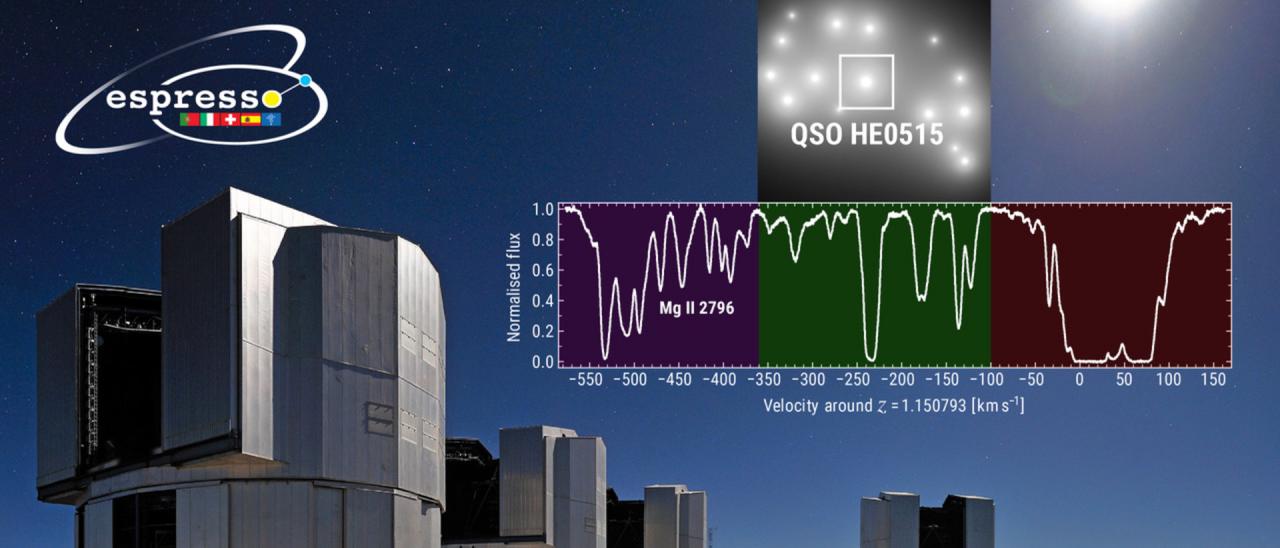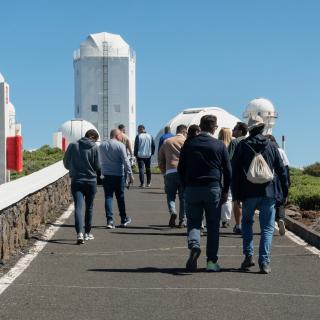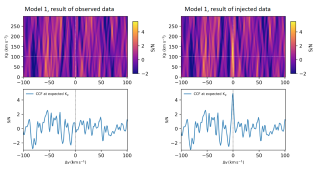Why does gravity have the strength it has? What exactly determines the value of the electromagnetic force? Are the laws of Physics the same in any part of the universe and at any instant in time? Measurements made with the ESPRESSO high resolution spectrograph on the Very Large Telescope (VLT) have permitted the determination of one of the fundamental constants of Physics when the universe was only 40% of its present age, helping to find an answer to one of these questions. The study, in which a leading group of researchers from the Instituto de Astrofísica de Canarias (IAC) participated, is published today in the journal Astronomy & Astrophysics.
Many of the most basic physical phenomena are determined by a set of “fundamental constants”, whose values we know by experiment with high accuracy. In spite of this, our knowledge about the nature of the universe, even within the framework of the standard model of Physics, probably the most successful theoretical model in human history, we do not have a method for predicting the exact values of these constants. Nor do we know clearly if they are really “universal constants”, i.e. whether they have identical values everywhere in the universe, or whether they had the same values in the past. Showing whether they are really constants is a basic question in Physics. Finding indications of a possible variation (either in time or in space) of one of these constants would probably make it necessary to develop new models or theories which modify or extend the current standard model.
Although it is not difficult to measure the value of these constants with high precision in laboratories on Earth, measuring them in other parts of the Universe normally implies the use of indirect detection methods, and the use of the most advanced instruments. This is what has been done in this study, published today in the Journal Astronomy & Astrophysics, using data from the ESPRESSO spectrograph on the Very Large Telescope (VLT) of 8.2 m diameter, at the European Southern Observatory in Chile.
"What we have found is that the electromagnetic force had the same value eight thousand million years ago as it has today” says Michael Murphy (Swinburne University, Australia) the first author of the article“. To show this we have measured the value of the so-called “fine structure constant”, usually written as alpha, by measuring spectral transitions in a cloud at redshift 1.15, which is so far away that the photons involved in the transitions have taken around 8 thousand million years to reach us” explains Ricardo Génova Santos, researcher at the IAC and one of the authors of the article.
Measurements with other spectrographs, also on the telescopes of the VLT, or on the Keck telescopes in Hawaii, had already provided tens, even hundreds of measurements of alpha in this system and in others, during the last two decades. In some cases they seemed to show variations in alpha, in time or even with position on the sky. However there was no definitive agreement about the reliability of those measurements. There were doubts about whether the spectrographs could produce instrumental effects, which could distort the spectra, producing similar variations as those expected from variations in alpha. “So we thought up a new type of spectrograph ESPRESSO, which has a much better control of these systematic effects, so that after 12 years building it, and a major effort, we now have the ideal instrument to make accurate measurements of alpha” explains Rafael Rebolo, the Principal Investigator of ESPRESSO at the IAC.
ESPRESSO, built by a consortium formed by the IAC, the University of Geneva, the Trieste Observatory and the Institute of Astrophysics and Space Science at Oporto, is an extremely stable spectrograph, mounted in an evacuated chamber underneath the four telescopes which make the VLT at ESO. The measured spectra are calibrated using a novel technique called a “laser frequency comb” which produces an extraordinarily precise and stable calibration in wavelength. This is one of the main characteristics of the instrument, and what has allowed it to make precise measurements of alpha, with a remarkable accuracy at the level of just one part per million. “This amazing degree of accuracy in the wavelength calibration also makes ESPRESSO a unique instrument for the study and characterisation of exoplanets using the radial velocity method” explains Jonay Gonzalez, an IAC researcher and another author of the article.
The design of ESPRESSO was inspired by HARPS, a spectrograph on the ESO 3.6m telescope. Similarly, the future HIRES spectrograph on the ELT (European Large Telescope) will be inspired by ESPRESSO, and will benefit from a much bigger collecting area so as to continue advancing in this kind of studies, obtaining measurements or limits to the variation of alpha and of other fundamental constants which may throw light on physical phenomena as yet unknown.
The IAC team which has participated in this work comprises Ricardo Tanausú Génova Santos, Rafael Rebolo, Carlos Allende Prieto, Jonay I. González Hernández y Alejandro Suárez Mascareño.
Article: M. T. Murphy et al: "Fundamental physics with ESPRESSO: Precise limit on variations in the fine-structure constant towards the bright quasar HE 0515−4414", Astronomy & Astrophysics, December 2021. DOI: https://doi.org/10.1051/0004-6361/202142257
Contact at the IAC:
Ricardo Génova, rgs [at] iac.es (rgs[at]iac[dot]es)
